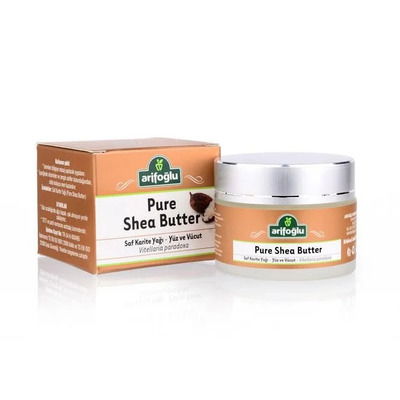08.11.2022
WHAT IS SHEA BUTTER?
WHAT IS SHEA BUTTER?
• The Shea tree has been named the “Tree of Life”, a nickname earned for its ability to address numerous skin, hair, and health conditions. “Nature's Conditioner” is a nickname that Shea Butter has earned for its exceptional moisturizing and conditioning properties.
• Shea Butter is obtained from the seeds of the fruits of the Shea Tree.
• Topically used Shea Butter is known as an oil that nourishes the skin, increasing its clarity and solving problems such as dryness, blemishes, dark spots, discoloration, stretch marks, and wrinkles without clogging the pores.
• Shea Butter used in the hair moisturizes and nourishes from root to tip, protects against dryness and brittleness, and repairs without leaving any residue.
• Shea Butter Oil used in massages supports skin elasticity and flexibility, increases collagen production, and increases circulation while supporting the regeneration of skin cells.
• Shea Butter prevents bacteria that irritate the skin and causes acne from staying on the skin, relieves nasal congestion, creates a barrier that protects the skin from harsh environmental factors, and facilitates care.
GROWING AND HARVESTING QUALITY SHEA OIL
Shea trees are native to the Savanna regions of West Africa, where about 500 million of them grow wild from Senegal to Sudan. Although attempts have been made to cultivate the tree in other regions, efforts have so far been fruitless. Shea Trees first begin bearing large, green, plum-like fruits when they are 10 to 15 years old, reaching their full bearing potential between 20 and 50 years of age. Known to have a life span of up to 200 years, the tree continues to bear fruit until this time.
Shea trees begin blooming from late winter to early spring, usually between February and March. The green fruit ripens to a brown color during the summer months, usually between June and July. Starting from this period and entering Autumn, Shea berries begin to fall to the ground, usually in September. This allows for a natural, manual picking system during harvest time. 30% of the peanuts remain in the ground to germinate and add nutrients to the soil. One Shea tree can yield 15-20 kg of fresh Shea fruit, which will produce 3-4 kg of dry beans containing 42-48% fat (butter).
The immature Shea berries have a light green exterior known as the Epicarp, which protects the fleshy Mesocarp, also known as the Pulp. Most Shea fruits contain one or two Seeds, but some may have up to three. These are edible, oil-rich beans that are used to produce the extract known as Shea Butter, which is considered a vegetable oil. In the wild, Nuts/Seeds continue to be used by wind, rain, animals, and humans for the future growth of Shea trees.
